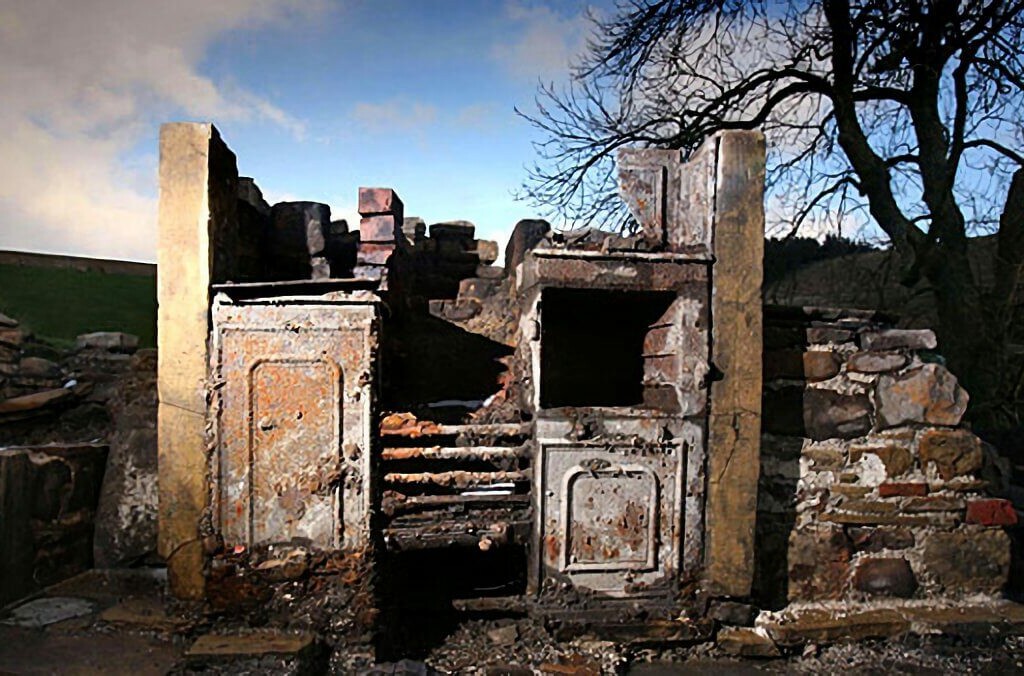The discovery of a 17th-century dwelling in Pendle revives the story of the 1612 witch trials. Archaeological excavations suggest this house may have belonged to a key figure from the past, tied to rituals and superstitions that shaped life in rural England.
Pendle and the Witches: Archaeology Unveils 17th-Century Secrets
The recent discovery of an enigmatic 17th-century home in the Pendle area (United Kingdom) has reignited interest in a story that continues to captivate and chill curious minds.
This archaeological find offers a glimpse into the daily life of a community steeped in superstitions and dark legends. From the alleged practice of magic to the infamous trials of women accused of witchcraft, Pendle harbors a legacy that, four centuries later, still resonates in its misty hills.
A Past Shrouded in Secrets Comes to Light
Near the shadowy Pendle Hill, a group of engineers unexpectedly stumbled upon the remains of an old dwelling.
While working on the construction of a water infrastructure project, they uncovered brick walls and an underground space leading to a small chamber.
Initially, it was thought to be a simple abandoned rural home. However, after several days of excavation, specialists found evidence suggesting that the property might have belonged to one of the famous “Pendle Witches.”
Simultaneously, local legends of curses, love potions, and pacts with dark forces came back to life. With guidance from archaeologists and anthropologists, the discovery gained historical significance that has fascinated scholars worldwide, sparking new research into life in 17th-century England.
Echoes of Fear: The 1612 Witch Trials
The discovery brings back memories of one of the most chilling judicial episodes in English history: the Pendle witch trials of 1612.
Eleven women from the surrounding areas were accused of casting malevolent spells to murder ten people. Nine of them were hanged, another died in prison, and only one was acquitted. These convictions reflected the atmosphere of panic that prevailed not only in rural areas but also in the collective mindset of the time.
As a result, the region gained a reputation for sinister rituals, potions for healing or cursing, and witches said to influence their neighbors’ fates.
While popular fear was often fueled by gossip and disputes, the reality is that herbalism and rudimentary medicine formed part of the livelihood of many women in Pendle, frequently misunderstood as witchcraft.
The most famous site in this story has been Malkin Tower, mentioned in historical records as the home of Elisabeth Southerns (known as Demdike). At eighty years old, she already had a reputation as a witch, bolstered by her trade in amulets and brews meant to heal or seduce.
Many scholars believe the recently uncovered house could be Malkin Tower, as it is located at the heart of the “witch country” and features 17th-century architectural structures.
If archaeological evidence confirms this, we would be looking at a tangible link to the dramatic events of 1612.
Likewise, this potential discovery stirs the imagination of locals, who have shared chilling tales for decades of apparitions, midnight screams, and black cats prowling in the shadows. Malkin Tower could thus become a bridge between myth and modern archaeology.
The Mummified Cat: A Sinister Guardian
Shortly after realizing the magnitude of the find, the engineers reported a perplexing discovery to heritage authorities: a mummified cat found inside the house.
This detail suggests a protective ritual: at times, a live animal was sealed within the walls to ward off bad luck or malevolent spirits. This belief was deeply rooted in the society of the time, where fervent religious devotion coexisted with ancient superstitions.
The mummification of the cat, meanwhile, opens a window into the worldview that permeated rural England. Fear of the unknown drove people to seek methods to safeguard their homes and families. For modern archaeology, this discovery encapsulates the mindset of a community desperate to ensure that dark energies did not cross their thresholds.
On the other hand, the house contained more than just 17th-century remnants. Archaeologists found a large 19th-century kitchen with Victorian-style crockery and a tin bath. This mosaic of elements, according to the excavation team, demonstrates the continuous human occupation of the same space over centuries.
Additionally, it illustrates how industrial and architectural transformations altered Pendle’s landscape without completely erasing the traces of its darkest chapter.
The Legacy of the Witches in Local Culture
This rediscovered house also revitalizes Pendle’s tourism market, encouraging themed tours and guided visits blending history with legend.
Stories are still told of how the witches could conjure storms, ruin harvests, and bewitch livestock. Today, the community balances modernity with preserving a cultural legacy steeped in mystery.
Meanwhile, construction work has been temporarily halted to allow for a thorough investigation into the site’s historical relevance. Should documentary evidence emerge linking its former inhabitants to the 1612 trials, this site could become a national monument.
Ultimately, the Pendle episode is not merely a tale from the past but underscores the importance of revisiting history with a critical eye. Fear and ignorance are believed to have fueled the unfounded accusations that led many women to the gallows.
Similarly, the cultural impact of this house suggests that witch legends are not mere stories but remnants of a turbulent time when superstition and faith coexisted in tense conflict.
Mike Rivero — Witchcraft in England





